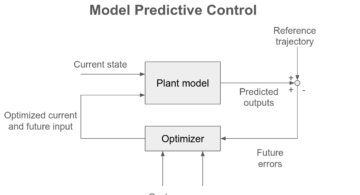Eyes, JAPAN
Mobile AI: Intelligence in Your Pocket
Maneesha
Can you imagine a world without smartphones? For many of us, it’s a challenge. In just three decades, these devices have transformed from luxury items into indispensable tools that shape how we work, socialize, and navigate our lives. Now, imagine infusing these essential devices with artificial intelligence…
Mobile AI, or the integration of artificial intelligence into mobile devices, is revolutionizing our smartphones once again. Today, tech companies consistently highlight AI in their product launches, signaling its growing importance. With mobile AI, our phones are evolving from mere tools into intelligent companions, capable of anticipating our needs and assisting us in unprecedented ways.
But how exactly is AI evolving to become another daily feature of our smartphones? Let’s take a closer look at this fascinating intersection of technology and convenience and delve deeper into how some major smartphone makers have integrated AI features into their products.
1. Google’s new circle to search
How have we been searching for something for all these years? We typically search by typing keywords or using image search. Now, Google has introduced “circle to search,” a feature first widely seen when Samsung’s latest flagship was unveiled. This method takes browsing to the next level by providing a more natural and intuitive search experience.
To use this feature, simply hold the bottom bar (or home button) on your phone to activate it, then circle anything on your screen. The operating system communicates with Google’s search to provide results related to the circled content. This feature works across all apps since it’s built into the OS, eliminating the need for additional downloads. It’s like opening a portal to more information by circling what you see on the screen.
2. Live translate
The AI-powered Live Translate feature on some Pixel phones works across text, camera, videos, podcasts, phone calls, video calls, and audio messages.
Imagine living in a country where the language barrier makes everyday tasks challenging. Answering phone calls in a language you don’t understand can be exhausting. Now, imagine your smartphone translating and speaking for you, while also displaying the other person’s words in your preferred language. That’s the power of Live Translate with AI.
My story: As a foreigner living in a country where about 90% of the people speak only their native language, having proper conversations over the phone about things like house contracts, utilities, or administrative matters can be daunting. Often, I struggle to convey my needs or understand their responses, leading to misunderstandings and frustration. This feature would significantly enhance my daily life.
I would love to see Live Translate become a standard feature in all smartphone operating systems.
3. Image editing – Magic editor, Magic eraser
One of Google’s most exciting releases includes features like Photo Unblur, which uses AI to clear up blurry shots, ensuring that hurried photos don’t end up in the “deleted photos” folder.
The Magic Eraser and Editor tools have captured a lot of attention. With the Magic Eraser, you can circle unwanted parts of an image, which are then erased and seamlessly replaced with background content. The editor can also move parts of an image to different locations, making it look unedited. How cool is that! Now, you can effortlessly remove photobombers from your pictures, like magic.
4. AI assistants
AI assistants are familiar to most people, but recent advancements have made them even more impressive. We have Apple’s Siri, Google Assistant (rumored to be renamed Gemini), Amazon’s Alexa, Samsung’s Bixby, and Microsoft’s Cortana. These virtual assistants are integrated well within their respective ecosystems of products and services.
With AI assistants, you can issue simple commands like setting an alarm or more complex ones like reading and summarizing emails. While Google Assistant currently leads the pack, the rise of generative AI and advancements in Natural Language Processing (NLP) and Large Language Models (LLMs) may soon change this dynamic. Previously, AI in smartphones operated “under the hood,” but now it’s transitioning into a feature that people interact with daily.
Conclusion
Mobile AI is revolutionizing our smartphones, transforming them from simple tools into intelligent companions. Features like Google’s circle-to-search, Live Translate, advanced image editing tools, and AI assistants are just the beginning. As technology continues to evolve, we can expect even more innovative applications that will further integrate AI into our daily lives, making our smartphones smarter and more indispensable than ever.
PS: The blog article cover image (the first image) was generated by the AI image generator, Midjourney.



 2025/12/12
2025/12/12 2025/12/07
2025/12/07 2025/11/06
2025/11/06 2025/10/31
2025/10/31 2025/10/24
2025/10/24 2025/10/03
2025/10/03 2025/08/30
2025/08/30 2025/08/22
2025/08/22